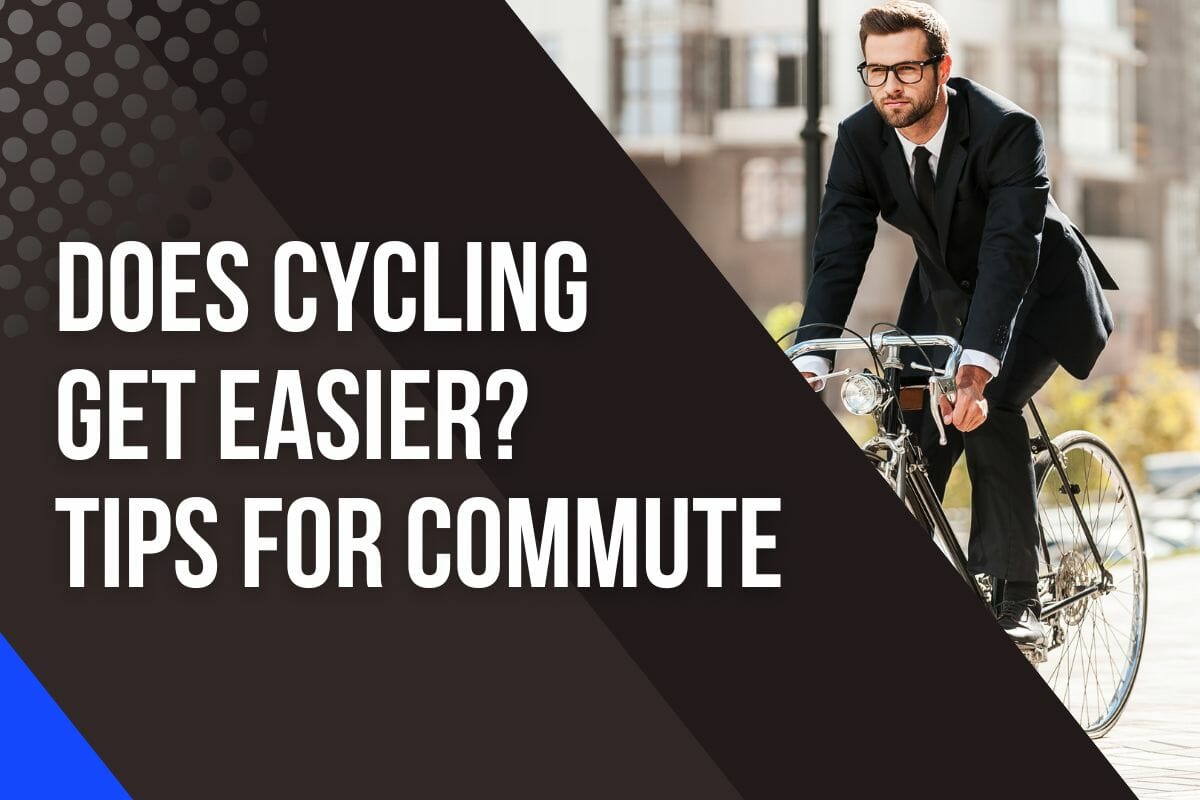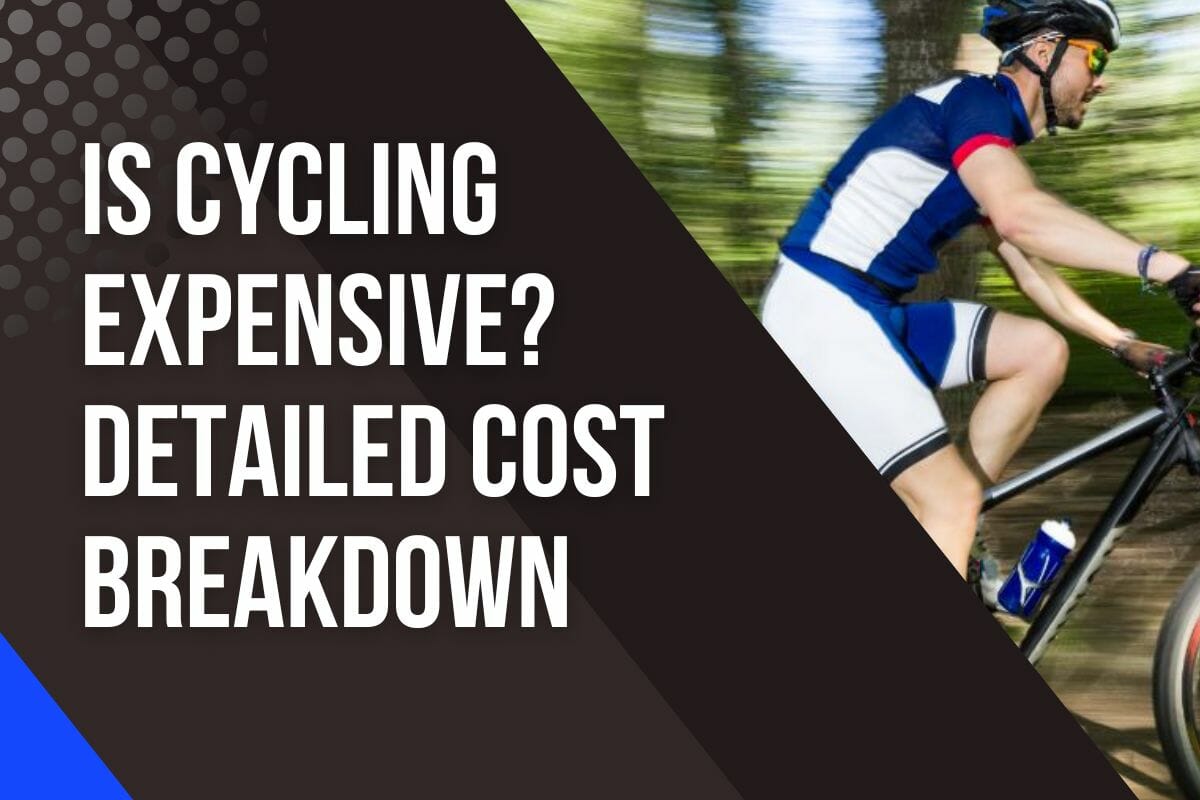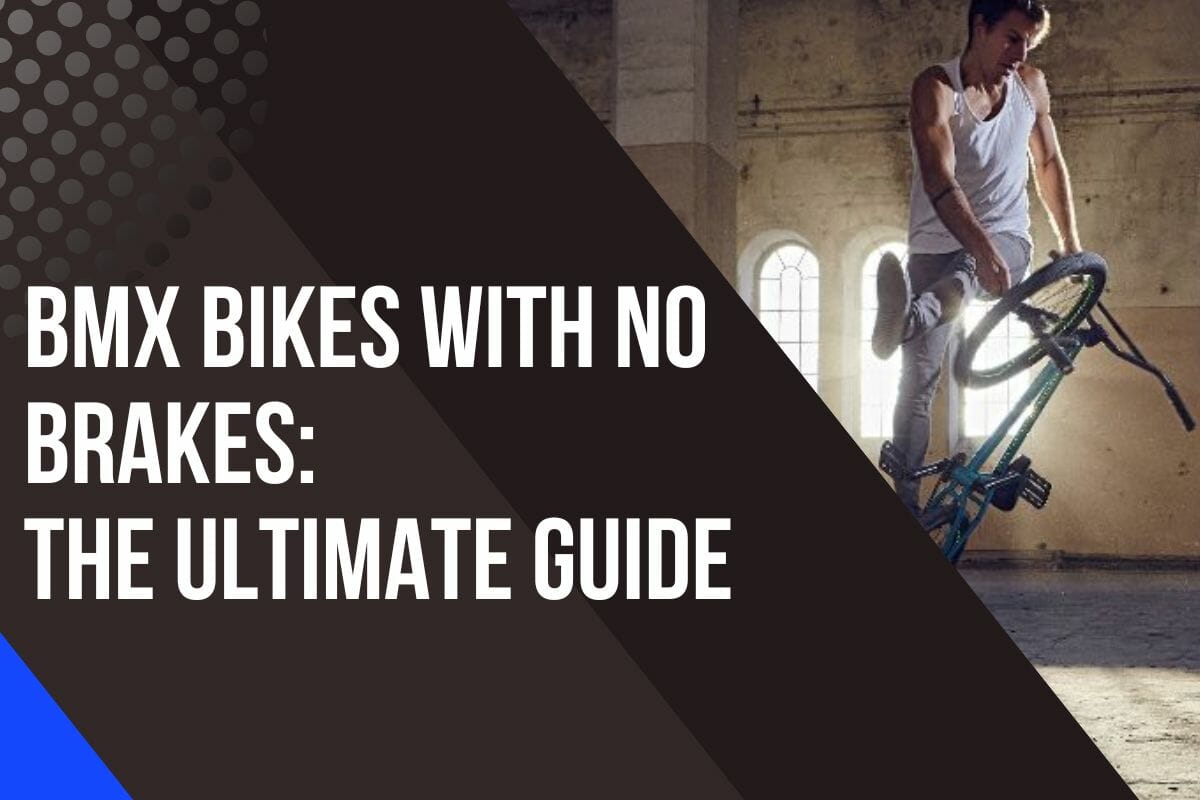When Does Cycling Get Easier? Tips For Commute And Dealing With Fatigue

Riding a bicycle for the first time can be intimidating and overwhelming, especially if it’s been a while since you last got on two wheels.
But does cycling get easier the more you do it?
While there is no one-size-fits-all answer, there are several physical and equipment factors that can make your cycling journey much smoother and enjoyable.
If you’re ready to take on the challenge of conquering cycling then read on as I share my advice from 10 years of personal experience and stories from others who’ve been there before about making biking easier for all ages.
Practice Makes Perfect
Cycling can be a great way to get exercise, but for many, it feels like an uphill battle.
The question is: does cycling get easier the more you do it?
The answer is yes – if you increase your cycling frequency and work on body conditioning.
With each ride, you gradually got more comfortable and confident.
After a few weeks, you will find yourself enjoying your rides more as your fitness levels improved and your speed increases.
Yes, there will still be hills that might challenge you, but with proper training and nutrition, your body will become better conditioned to tackle them.

Making small changes can make a big difference too.
For example, investing in some better bike equipment such as a hybrid bike or mountain bike made it easier for me to tackle different terrain.
Also, planning routes that were flatter rather than hilly helped me increase my average speed and cover more miles with less effort.
How Quickly Does My Body Adapt To Cycling?
In a word – it depends.
Though cycling is an activity that can be enjoyed immediately, the body needs time to adjust and adapt to longer rides.
How much time this takes varies from person to person, as every individual’s physiology and conditioning are unique.
I’ve found that it takes my body around two to three months to get used to cycling to work without fatigue.
This is because I don’t jump straight into five days a week of cycling.
Instead, I gradually build up my fitness levels and adjust my body to the varying terrain, speeds, and distances of each ride.

Put simply, cycling adaptation is both physical and mental.
Physically speaking, your muscles need to strengthen in order to cope with increased distance or intensity of cycling.
Muscles also need conditioning so they become used to working together efficiently when you ride.
This process can take anywhere from several weeks to several months depending on how often you cycle and the type of riding you do.
Mentally too, your body must learn how best to use its energy effectively while cycling up hills or tackling long-distance routes.
You may even find yourself making small adjustments such as changing your posture or a pedaling technique over time as your body learns what works best for it.
It’s important at this stage not to push yourself too hard but instead give yourself enough rest between rides so that your body has time to recover after each session before pushing itself again.
The good news is that once your body adjusts, it will start using less energy per mile than someone who isn’t conditioned for cycling yet.
Meaning you’ll have more power in reserve if needed.
What Makes Cycling Easier Over Time?
When you continue to cycle, your body begins to develop cycling strength and stamina.
This process is known as muscle memory: after repeatedly engaging the same muscles in specific ways over an extended period of time, they become more efficient at performing those tasks.
Below, I’ll explain in more detail the physical factors that influence your ability to ride a bike.
1. Higher Fitness Level And Strength
As someone who has been cycling for years, I can confidently say that cycling has become easier over time due to increased fitness levels and strength.
Initially, it was difficult to even complete a single route without feeling exhausted but now, I’m able to ride twice as far with much less effort.

You’ll find that increased fitness level and muscle strength are key factors when it comes to improving your overall cycling ability.
On top of these benefits, strengthening the muscles used while riding—especially the quads, glutes, hamstrings, and calves—will help support your body weight and contribute to more comfortable rides.
The improved power output resulting from stronger legs means not having to work as hard at maintaining an intense pace over hills or another challenging terrain.
2. Improved Stamina Capacity
After weeks or months of cycling, your stamina will gradually increase.
Improved stamina allows you to go the extra mile without getting winded or exhausted.
The first step in developing improved cycling stamina is to gradually increase the duration of your rides over a period of time.
This means starting out slow and then gradually increasing your mileage each week until eventually, you are able to cover longer stretches with relative ease.

Additionally, mixing up terrain regularly when riding helps build stronger muscles that can handle those long rides more efficiently.
Working on inclines as well as flat surfaces makes it easier to tackle any type of terrain while maintaining good endurance levels.
Finally, it’s important to make sure that you are fueling yourself adequately before and during your rides.
Eating nutritious foods such as healthy carbs and proteins will give you sustained energy throughout the entire ride so that fatigue doesn’t set in too early.
Hydration is also key – having enough fluids not only keeps your body temperature regulated but also allows your muscles to work better for extended periods of time.
3. Improved Mental Health
Cycling can be an incredibly rewarding experience, both mentally and physically.
As you become more confident in your abilities, cycling becomes easier and the mental resilience that comes with it is invaluable.
Riding brings about physical well-being. A healthy and strong body reduces stress levels and increases confidence.

This leads to greater feelings of self-worth and emotional stability over time.
It’s amazing how much better our minds feel when we are taking care of ourselves through exercises like cycling.
4. Improved Balance And Motor Coordination
Cycling gets easier because you improve your balance and coordination on a bike over time.
Balance training is essential to mastering the art of cycling, as it helps cyclists stay in control while navigating terrain more easily.
This can be achieved through simple exercises such as standing on one foot with eyes closed or walking along a line without stepping off.
Additionally, these activities involve core muscles which are integral for providing stability during long rides.

Coordination exercises are also important for becoming a better cyclist.
These involve practicing skills that help manage speed and direction when riding over obstacles like rocks, roots, mud, and sand.
Such drills include bunny hops (jumping both wheels at once), wheel lifts (lifting the front or back wheel), and cornering techniques (leaning into turns).
Bike handling becomes much smoother, safer, and quicker with this kind of practice.
In addition to improving motor skills, these activities require mental agility and focus so riders can anticipate upcoming trails efficiently and take appropriate action.
5. Proper Technique And Form
When I first started cycling, I had no idea how to properly enter a corner or navigate a hill.
But over the years, I have developed better techniques and feel much more confident when taking on these obstacles.
It all starts with correct posture: keep your back straight, arms slightly bent, feet firmly planted in the pedals, and eyes looking ahead of where you want to go.
When turning corners or shifting gears, think about smoothly pushing down or up on one pedal at a time; this helps maintain momentum while enabling smoother transitions.

Practice these techniques until they become second nature – then you can start increasing your speed by focusing on power output from each leg as you apply pressure alternately on both pedals.
You may also find it helpful to practice ‘cadence drills’ – short bursts of effort that help build strength and stamina so that longer rides are more comfortable.
With a little practice, you’ll be able to transition between cadences easily without feeling any strain.
And once you’ve mastered basic pedaling techniques, try tackling hills or other challenging terrains – this is an excellent way to take your riding skills to the next level.
6. Weight Loss And Jacked Body
Since taking up cycling, I have noticed a dramatic change in my body composition.
My weight has stayed the same, but I’ve lost fat and gained muscle, giving me a much more toned appearance.
Cycling has been a key factor in achieving this transformation.
As I pedal away on my bike, my body is constantly burning calories and building muscle mass.

This helps to reduce any excess fat around my abdomen and tone up my arms and legs at the same time.
Not only will it help you shed pounds, but also make changes to your body’s shape that are more aesthetically pleasing.
Stronger muscles and less body fat make it far easier to go through challenging terrain when biking.
When cycling uphill or racing against other riders, it’s easier for me to push myself to the limit.
On flat routes, I can maintain a steady pace that still keeps me fit without feeling too exhausted afterward.
Use The Right Equipment For The Job
We feel more confident on our bikes when we have the right equipment.
This is why it’s important for people who are just starting out cycling to invest in certain accessories that can make a huge difference.
Bike fit is one such factor; having your saddle and handlebars set at the correct height will help you be more efficient while pedaling.
Additionally, cycling clothing specially designed for riding can also make things easier by providing extra support and comfort.

Bike accessories like mudguards, panniers, and bottle cages are incredibly useful too.
Not only do they make longer rides much more comfortable but they also keep you safe from bad weather or road debris.
Investing in lights for commuting purposes will give you an extra layer of protection if you need to ride during the night time.
Finally, getting your hands on some basic tools like spare tubes, tire levers, and multi-tools should always be considered as these can save you from any unexpected situations while out on the road.
Choose The Right Types Of Bike
When selecting a bike, it is important to choose one that best meets your needs.
The type of bike you select will have an impact on the ease and enjoyment of cycling.
There are 4 popular types of bicycles: road bikes, mountain bikes, hybrid bikes, and cruiser bikes.
You can’t go wrong with any of these.
1. Road Bikes
Road bikes are popular because they are lightweight and fast, allowing riders to cover long distances quickly.

They also have narrow tires and drop handlebars, which make them more aerodynamic and improve their handling on the roads.
Road bikes are available in various price ranges to suit different budgets, although they’re usually more expensive due to the lightweight carbon fiber material.
Additionally, road bikes are designed for a variety of terrain, from flat roads to steep hills, making them a versatile option for a variety of riders.
2. Mountain Bikes
Mountain bikes are great for off-road riding or on trails with lots of hills and bumps.

They feature knobby tires for better grip in slippery conditions as well as shock absorbers for cushioning during bumpy rides.
Mountain bikes usually require more effort to pedal than other bicycle types but can be an exhilarating ride when taken off the beaten path.
3. Hybrid Bikes
Hybrid bikes combine features from both road and mountain bikes making them versatile rides perfect for road biking, commuting, or even light trail use.
Hybrid bikes typically provide a comfortable upright position which helps reduce strain on the back while maintaining good visibility and maneuverability.
These versatile cycles make it easier to transition between different terrain without feeling too uncomfortable or unstable.
4. Cruiser Bikes
Cruiser Bikes offer maximum comfort due to their wide seats and swept-back handlebars.

They generally have larger wheels than other bicycles allowing riders to move faster with less effort on flat roads or paths.
Cruiser Bikes come equipped with extra features like cup holders, basket racks, and fenders which add convenience while out on the open road.
These stylish cycles also make a statement wherever they go!
Whether you’re looking for something fast yet comfortable or rugged yet reliable – there’s a bicycle out there that suits your needs perfectly!
5. Bonus: Electric Bike
It’s no secret that cycling can be difficult and sometimes downright exhausting.
But what if you could enjoy the benefits of biking without breaking a sweat?
Enter electric bikes – also known as e-bikes!

Many users report feeling more relaxed while riding their e-bikes because they don’t have to worry about going too fast or exerting themselves too much.
They also make hills much less daunting by providing just enough assistance to keep pedaling effortlessly.
The combination of ease and convenience makes electric bikes perfect for commuters, recreational riders, and even thrill seekers who want something new and exciting.
Whether you’re looking for a way to get around town faster or simply want to take it easy during long rides, there’s an e-bike out there for everyone.
E-bikes come in all shapes and sizes, so it’s essential to do your research before investing in one.
Almost all types of bikes (road, mountain, hybrid, cruiser) have their electric version.
Reviews are essential – read up on other rider experiences with different models to get an understanding of which type would best suit your needs.
Multimodal Commuting Is A Good Idea
Multimodal commuting is an effective way to reduce the stress and strain that can come with long commutes.
This type of commute is for those who want to make their journey between home and work a more enjoyable, comfortable, and efficient experience.
A multimodal commute allows you to avoid traffic congestion by combining modes of transportation such as cycling with public transport.
For example, you can ride your bike partway and then take a train or bus the rest of the way.

Another great option for multimodal commuting is folding bikes.
They are lightweight and compact in size so you can easily bring them inside on busy buses and trains, or even store them in the trunk of your car.
This makes it even easier to combine cycling with public transport when traveling long distances.
You can also choose to store two bikes.
One full-size bike is used for riding to a certain point and another smaller bike can be used for the entire journey once there is no room on public transport during peak times.
Whatever combination of travel options works best for you, multimodal commuting has many benefits in making your commute less taxing on both your body and resources.
My Verdict
Cycling can be a great way to get exercise, explore the outdoors and increase your overall health.
But for many people, getting started with cycling can feel intimidating or overwhelming.
It’s important to remember that cycling gets easier over time – as you become more comfortable on the bike and gain physical strength, it will start feeling simpler than ever before.
You may want to choose terrain that is suitable for your level of skill and confidence.
Try out different types of bikes until you find one that feels right.
Wear clothing made specifically for cyclists.
Always follow safety rules while biking.
With enough dedication and perseverance, anyone can learn how to cycle comfortably and confidently.





